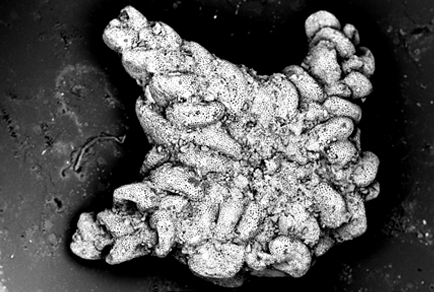Abstract
During recent years, the study of extinct brittle stars has gained significant momentum thanks to advances in our understanding of the group’s skeletal morphology. On the basis of these novel insights and the discovery of new, exceptionally preserved material from the middle Hettangian of Belgium, we here re-describe the enigmatic brittle star Mesophiomusium kianiae. We show that it represents a new genus, Persoonaster gen. nov., which shares a number of striking similarities with the Triassic genus Aspiduriella, forming a paedomorphic lineage at the stem of the extant Euryalida for which we here introduce the new family Aspiduriellidae. The Aspiduriella lineage was among the most common and widey disributed in the Triassic, and unexpectedly survived into the Lower Jurassic as evidenced by recognition of the new genus Persoonaster.
References
- Blumenbach, F. (1804) Specimen archaeologiae telluris terrarumque inprimis Hannoveranarum. Commentationes Societatis Regiae Scientiarum Gottingensis, 15, 132–156.
- https://doi.org/10.5962/bhl.title.8819
- Bolette, D.P. (1998) Aspiduriella nom. n. for the genus Aspidura Agassiz, 1935 (Echinodermata: Ophiuroidea: Ophiuridae): preoccupied by Aspidura Wagler, 1830 (Reptilia: Serpentes: Colubridae). Journal of Paleontology, 72 (2), 401–402.
- https://doi.org/10.1017/S0022336000036386
- Clark, H.L. (1938) Echinoderms from Australia, an account of collections made in 1929 and 1932. Memoirs of the Museum of Comparative Zoölogy at Harvard College, 55, 1–597, 28 pls.
- Delsate, D., Duffin, C.J. & Weis, R. (2002) A new microvertebrate fauna from the middle Hettangian (Early Jurassic) of Fontenoille (province of Luxembourg, South Belgium). Memoirs of the Geological Survey of Belgium, 48, 1–83.
- Eck, H. (1865) Über die Formationen des bunten Sandsteins und des Muschelkalks in Oberschlesien und ihre Versteinerungen. Friedländer und Sohn, Berlin, 148 pp.
- Gray, J.E. (1840) A synopsis of the genera and species of the class Hypostoma (Asterias Linnaeus). Annals and Magazine of Natural History, 6, 175–184 + 275–290.
- https://doi.org/10.1080/03745484009443296
- Hagdorn, H. & Reich, M. (2023) Echinoderm Fossillagerstätten in the Triassic Muschelkalk – Adolf Seilacher’s early observations and current overview. In: Reitner, J., Reich, M. & Duda, J.-P. (Eds.), Fossillagerstätten and taphonomy – new ideas and approaches. Symposium der Forschungskommission „Origin of Life“, Abstractband zum Symposium, Göttingen, 23–25 November 2023. Niedersächsische Akademie der Wissenschaften, Hannover, pp. 16–32.
- Hendler, G. (2018) Armed to the teeth: a new paradigm for the buccal skeleton of brittle stars (Echinodermata: Ophiuroidea). Contributions in Science, 526, 189–311. https://doi.org/10.5962/p.324539
- Kutscher, M. (1987) Aspidura streichani sp. n. – eine neue Ophiuren-Art aus dem Muschelkalk von Rüdersdorf. Zeitschrift für geologische Wissenschaften, 15, 703–707.
- Lamarck, J.-B.M. de (1816) Histoire naturelle des animaux sans vertèbres. Tome Second. Verdière, Paris, 568 pp.
- Matsumoto, H. (1913) Evolutionary history of the class Ophiuroidea and a note on the new classification of the class. Zoological Magazine, 25, 521–527.
- Matsumoto, H. (1915) A new classification of the Ophiuroidea: with description of new genera and species. Proceedings of the Academy of Natural Sciences of Philadelphia, 68, 43–92.
- O’Hara, T.D., Hugall, A.F., Thuy, B., Stöhr, S. & Martynov, A.V. (2017) Restructuring higher taxonomy using broad-scale phylogenomics: the living Ophiuroidea. Molecular Phylogenetics and Evolution, 107, 415–430. https://doi.org/10.1016/j.ympev.2016.12.006
- O’Hara, T.D., Stöhr, S., Hugall, A.F., Thuy, B. & Martynov, A.V. (2018) Morphological diagnoses of higher taxa in Ophiuroidea (Echinodermata) in support of a new classification. European Journal of Taxonomy, 416, 1–35. https://doi.org/10.5852/ejt.2018.416
- Stöhr, S. & Martynov, A. (2016) Paedomorphosis as an evolutionary driving force: insights from deep-sea brittle stars. PLoS ONE, 11 (11), e0164562. https://doi.org/10.1371/journal.pone.0164562
- Stöhr, S., O’Hara, T.D. & Thuy, B. (2012) Global diversity of brittle stars (Echinodermata: Ophiuroidea). PLoS ONE, 7 (3), e31940. https://doi.org/10.1371/journal.pone.0031940
- Thomson, C.W. (1877) The voyage of the “Challenger”. The Atlantic; a preliminary account of the general results of the exploring voyage of H.M.S. “Challenger” during the year 1873 and the early part of the year 1876. Vol. 1. Harper & Borthers, New York, New York, xxix + 424 pp.
- Thuy, B. (2005) Les ophiures de l’Hettangien inférieur de Vance (B), Bereldange/Bridel et Bourglinster (L). Memoirs of the Geological Survey of Belgium, 51, 33–57.
- Thuy, B. (2013) Temporary expansion to shelf depths rather than an onshore-offshore trend: the shallow-water rise and demise of the modern deep-sea brittle star family Ophiacanthidae (Echinodermata: Ophiuroidea). European Journal of Taxonomy, 48, 1–242. https://doi.org/10.5852/ejt.2013.48
- Thuy, B. & Stöhr, S. (2011) Lateral arm plate morphology in brittle stars (Echinodermata: Ophiuroidea): new perspectives for ophiuroid micropalaeontology and classification. Zootaxa, 3013 (1), 1–47. https://doi.org/10.11646/zootaxa.3013.1.1
- Thuy, B. & Stöhr, S. (2016) A new morphological phylogeny of the Ophiuroidea (Echinodermata) accords with molecular evidence and renders microfossils accessible for cladistics. PLoS ONE, 11 (5), e0156140. https://doi.org/10.1371/journal.pone.0156140
- Thuy, B. & Stöhr, S. (2018) Unravelling the origin of the basket stars and their allies (Echinodermata, Ophiuroidea, Euryalida). Scientific Reports, 8, 8493. https://doi.org/10.1038/s41598-018-26877-5


